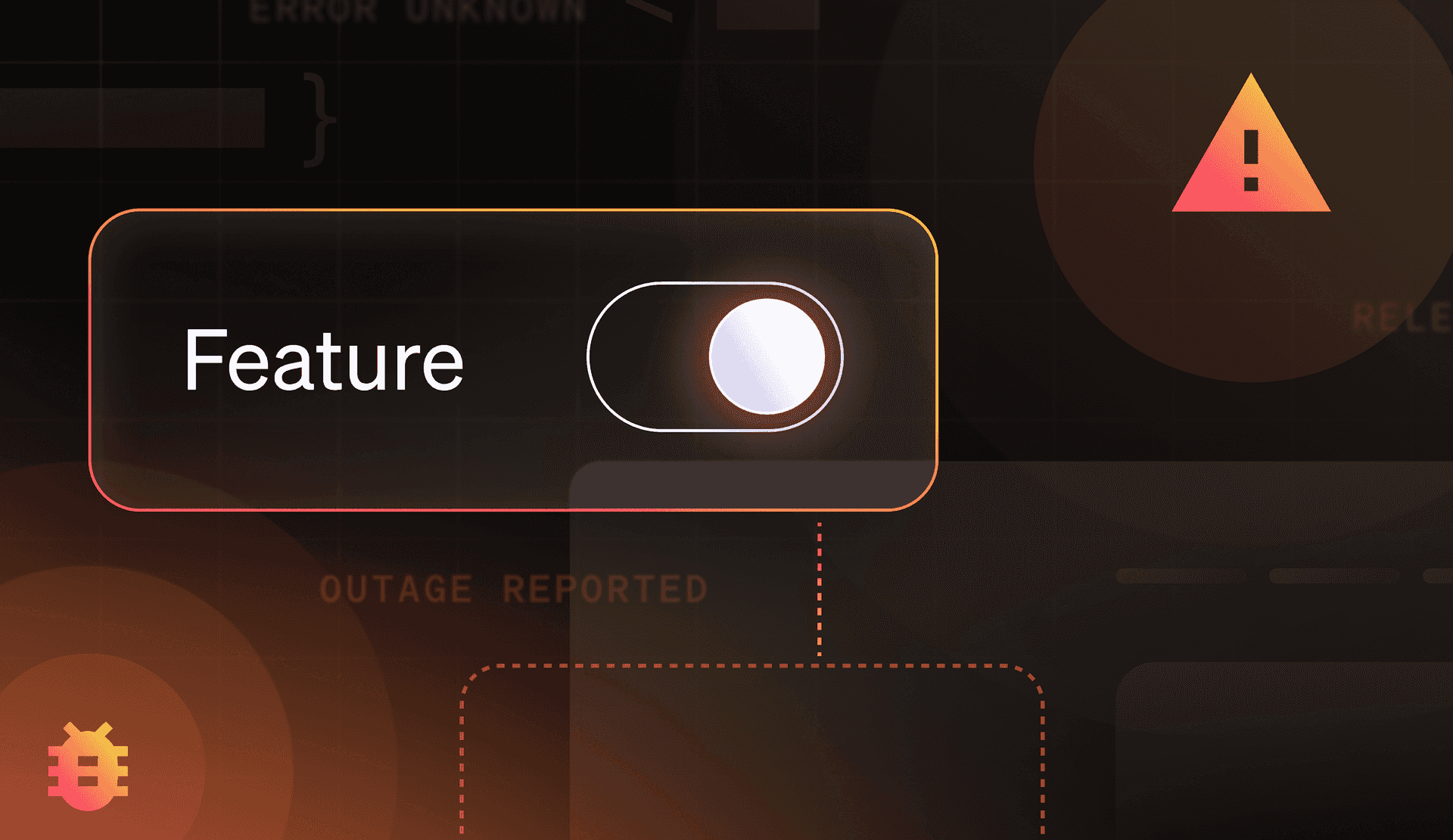At some point, many engineering orgs decide to build their own feature flag system. “It’s just a toggle,” someone might say. “We’ll whip something up.”
Fast forward a few months, and that simple tool is now running across environments, holding back deploys, and quietly siphoning hours of engineering time that nobody budgeted for, especially when something inevitably breaks.
I’ve been the engineer who’s stuck cleaning up a homegrown solution gone wrong too many times. And now that I work on the technical support side, I’m here to tell you that LaunchDarkly offers a better way. LaunchDarkly isn’t just a platform; it’s the set of tools you need when you’re done managing infrastructure you never wanted in the first place.
1. Support that’s there when it matters (even on a weekend)
Most homegrown systems fail at two moments: during an incident, or when the one person who built it leaves.
Either way, your team ends up scrambling. Imagine that you have issues during the week, and the impact is that engineering resources are being taken away from whatever you’re shipping in order to troubleshoot something that can’t generate revenue. This is the scenario that occurs if you’re lucky.
If you’re unlucky, your pager goes off on a Saturday. Now you become a valuable engineering resource who’s wasting your weekend parsing code in a half-maintained repo. Most engineers want to ship during the work week, while spending 0% of their time doing archaeology on rollout logic.
LaunchDarkly provides you with a global support team: real people with deep technical knowledge who, depending on your plan, are either always available or nearly always available. Over and over, I’ve seen our team unblock customers across time zones during critical moments. That’s not something you get from a Slack channel called #flag-questions.
2. Experiments that actually teach you something
Internal A/B tools usually peak with randomization and stop there. No metrics, no insight, and no hints about what happened or why.
LaunchDarkly gives teams structured, statistically sound Experimentation—A/B, multivariate, targeted rollouts—with data that connects directly to features. You don’t need a separate system, and you don’t have to guess.
If your current approach to experimentation includes the phrase “we kind of looked at usage afterward,” it’s time to move on to something more robust.
3. Releases that don’t rely on hope
When something breaks in production, your response time matters a great deal. LaunchDarkly Guarded Releases let you roll out features gradually, watch real-time performance, and trigger automated rollbacks when things go sideways.
I’ve been in incidents where this kind of setup prevented real customer pain. It also saved engineers from spending their Saturday night babysitting dashboards.
You may be able to develop that kind of resilience on your own, but it will take months to build and even more time to maintain. Or you can use a product that already works and scales.
4. AI configurations without the deploy churn
AI-driven features change constantly: models, prompts, parameters. Tying every adjustment to a full deploy slows teams down and makes iteration risky.
With LaunchDarkly, you wrap AI behavior in flags. Change a config, update a model, test a fallback—no redeploy required. It’s fast, safer, and observable.
I’ve seen teams get stuck in CI loops just to test prompt variations. AI Configs fixes that, freeing up your time to focus on what matters.
5. Compliance you don’t have to justify
Anyone who’s had to defend their internal tooling to their own security team—or, even worse, to a customer’s security team—will tell you that it’s not fun.
LaunchDarkly is SOC 2 Type II certified, ISO 27001 and ISO 27701 compliant, and built with privacy principles in mind. Managing audits, patching schedules, or access reviews can be painful. We help take care of that for you.
The best part? You can answer procurement and legal questions with a link, not a novel.
6. Scale without a rewrite
Things change. More teams, more environments, more flags. Most internal tools weren’t built with that future in mind, and you’ll know it when things start breaking.
LaunchDarkly supports 30+ SDKs, integrates with modern CI/CD, and is built to scale. It works the same when you’re five engineers or five thousand. We’ve seen it deployed across complex organizations in production, in real-life scenarios. You don't have to take my word for it; you can read it firsthand from our customers.
7. Time spent on what actually matters
Every hour you spend fixing internal tools is an hour not spent delivering value to users. That includes the time burned tracking down who changed a flag, writing docs no one will read, or explaining (again) how rollout percentages work.
LaunchDarkly isn’t just a platform—it’s how you stop wasting time solving problems that have already been solved.
Buy the tool; you’ve got better things to build
You can build a feature flag system. You can build a rollout engine. You can build monitoring, experimentation, access control, compliance tooling, and incident recovery. But you probably shouldn’t.
LaunchDarkly does all of that at scale, with global support, real uptime, and the benefit of lessons learned across thousands of teams.
Ready to stop maintaining infrastructure and start shipping with confidence? Start your free trial.





